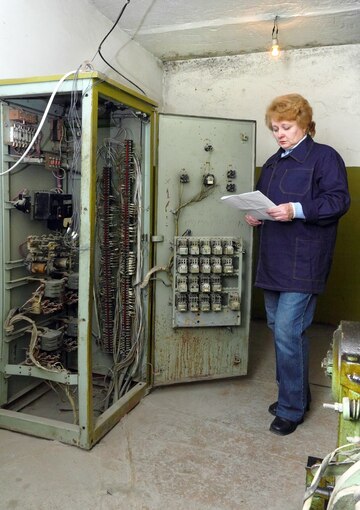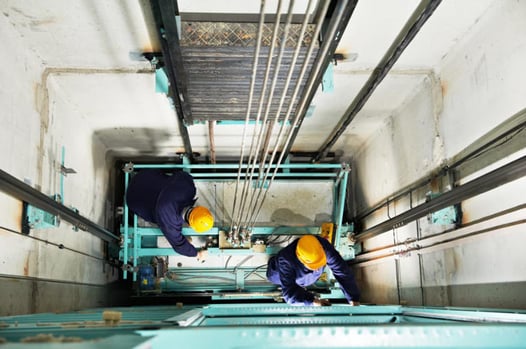Dependable Lift Maintenance Programs to Enhance Safety And Security and Performance
Dependable Lift Maintenance Programs to Enhance Safety And Security and Performance
Blog Article
Exploring the Comprehensive Actions Required for Lift Maintenance
In the realm of structure upkeep, guaranteeing the correct functioning and safety of lifts is vital. By dealing with essential aspects such as aggressive upkeep timetables, safety checks, and emergency situation readiness, an extensive understanding of the complexities involved in lift maintenance can lead to improved performance and security.
Normal Examinations
When it comes to making certain the long life and security of your lift system, normal inspections are paramount. These routine checks play a critical function in determining any type of prospective concerns prior to they intensify right into significant issues, making sure the smooth and safe operation of the lift. By carrying out routine assessments, upkeep teams can proactively attend to wear and tear, faulty parts, or any type of other issues that might compromise the lift's performance or safety.
Throughout these examinations, trained professionals thoroughly analyze different elements of the lift system, consisting of mechanical components, electrical systems, safety and security features, and overall architectural integrity. By discovering and resolving concerns early on, these assessments help stop pricey fixings, downtime, or security hazards, ultimately extending the life expectancy of the lift system and guaranteeing the well-being of its individuals.
Proactive Maintenance Schedules
Executing proactive upkeep routines is crucial for making best use of the effectiveness and long life of lift systems. By sticking to a positive upkeep method, lift owners can address potential problems before they intensify right into significant issues, eventually decreasing downtime and costly repair services.
A well-structured positive upkeep timetable must detail certain jobs, regularities, and accountable personnel. It is important to adhere to supplier referrals and market criteria when producing these routines to make sure the lift operates securely and effectively. Additionally, documenting upkeep tasks and keeping thorough records can offer important insights right into the lift's efficiency gradually, helping in making and recognizing patterns informed upkeep decisions.

Security Conformity Checks
Making sure security compliance through thorough checks is critical in preserving lift systems' reliability and protecting user health. Safety and security compliance checks include a comprehensive examination of different components, including electric systems, mechanical components, emergency brakes, doors, and other important safety and security features. These checks are crucial to recognize any kind of prospective risks or breakdowns that can endanger the lift's procedure and put customers in jeopardy.
Regular safety compliance checks should be carried out by certified specialists in adherence to sector regulations and requirements. These checks help in finding issues early, enabling for prompt repair services and preventative upkeep procedures to be implemented. Keeping thorough records of security conformity checks is vital for tracking the lift system's performance over time and showing conformity with safety and security guidelines.
Devices Upgrades and Modernization
Enhancing lift systems with devices upgrades and innovation is crucial for improving efficiency and security criteria in upright transportation. As innovation developments, older lift systems might come to be obsolete, leading to lowered integrity and prospective safety threats. By spending in devices upgrades and modernization, lift maintenance contract structure owners can guarantee that their lifts satisfy existing market criteria and guidelines.

Along with functional advantages, equipment upgrades and innovation projects can also boost the looks of the lift, supplying a much more modern and attractive experience for passengers. Ultimately, buying lift upgrades and modernization is a proactive method in the direction of making sure the longevity, security, and performance of upright transportation systems.
Emergency Situation Preparedness Planning
An effective emergency situation preparedness strategy is essential for making sure the safety and security and speedy response in situation of unanticipated cases entailing lift systems. Emergency situation preparedness planning for lift systems includes an organized method to alleviate risks, ensure passenger safety, and lessen downtime throughout emergencies.
Trick elements of an emergency situation readiness plan for lifts consist of clear interaction protocols, routine training for lift operators on emergency treatments, and routine drills to check the effectiveness of the plan. lift maintenance contract. In addition, the plan must outline details functions and duties for all stakeholders involved, consisting of structure management, upkeep personnel, and emergency responders
In the event of a lift malfunction or entrapment, having a distinct emergency situation strategy can assist in working with a reliable and punctual action to ensure the safety and security and well-being of travelers. Prompt communication, access to emergency devices such as interaction gadgets and emergency situation lights, and knowledge of emptying treatments are necessary elements of an extensive emergency situation readiness plan for lift systems. By focusing on emergency situation preparedness preparation, structure supervisors can improve the general safety and dependability of their lift systems.
Final Thought
To conclude, the extensive procedures required for lift upkeep include routine evaluations, aggressive upkeep timetables, safety and security compliance checks, devices upgrades and modernization, and emergency preparedness planning. These steps are necessary for guaranteeing the safety and security, integrity, and effectiveness of lifts in numerous setups. By executing these steps, lift proprietors can minimize the threat of accidents, expand the life-span of their equipment, and adhere to market regulations.

During these inspections, educated professionals extensively check out different aspects of the lift system, including mechanical components, electrical systems, security functions, and overall structural integrity.Ensuring safety compliance through thorough checks is paramount in maintaining lift systems' reliability and guarding user well-being. Keeping detailed records of safety conformity checks is vital for tracking the lift system's efficiency over time and demonstrating conformity with safety and security policies.
By focusing on emergency situation preparedness preparation, building supervisors can boost the overall safety and integrity of their lift systems.
Report this page